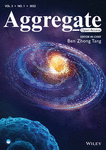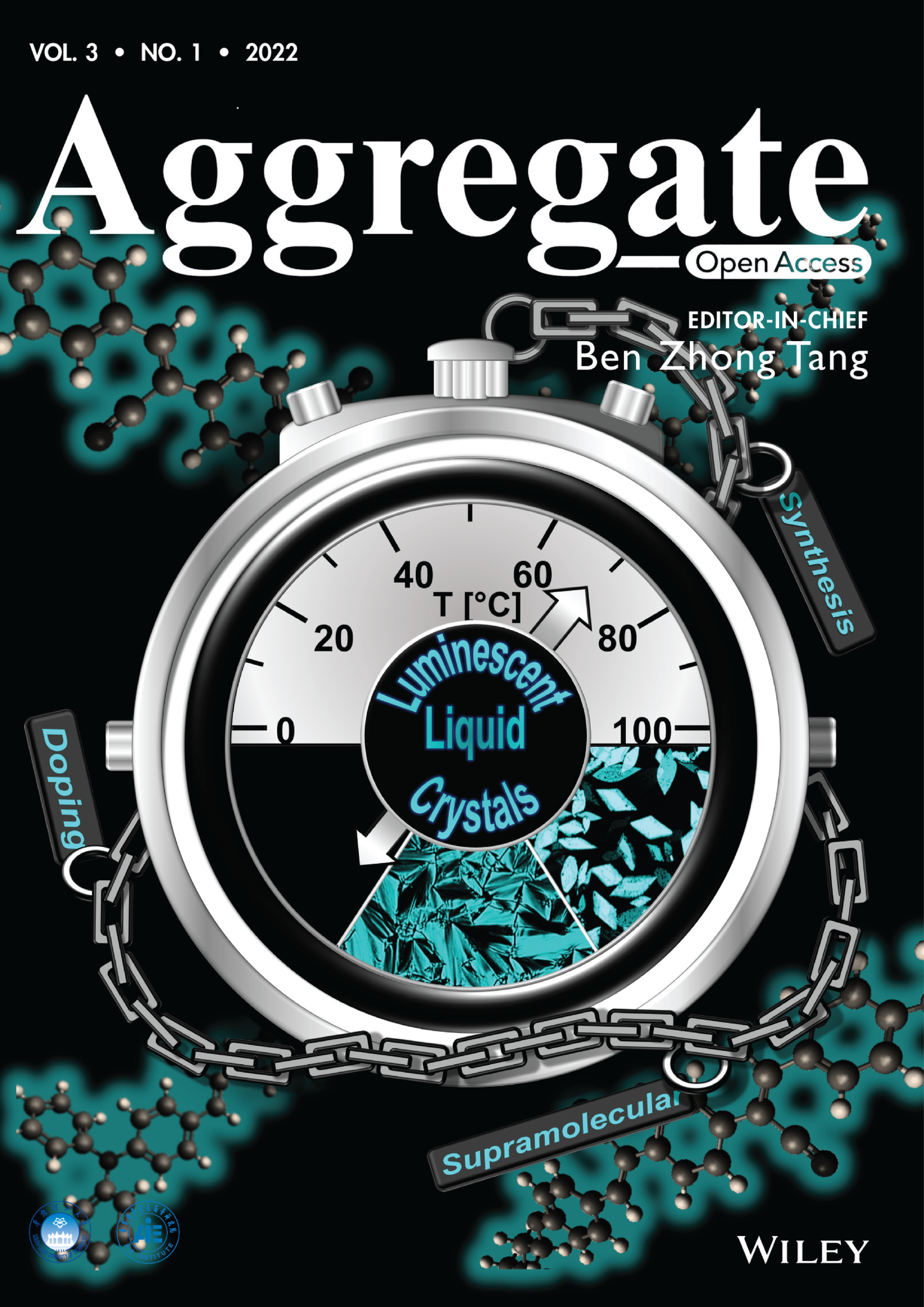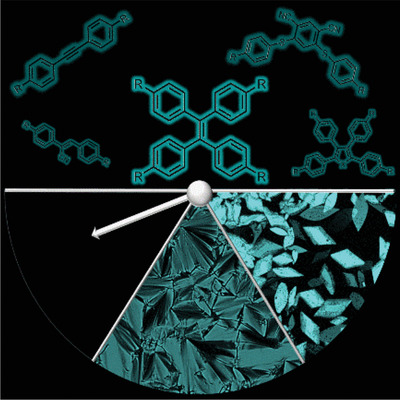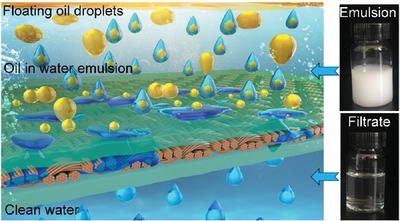Journal list menu
Export Citations
Download PDFs
FRONT COVER
Front Cover: Spherical nucleic acids: Organized nucleotide aggregates as versatile nanomedicine
- First Published: 22 February 2022
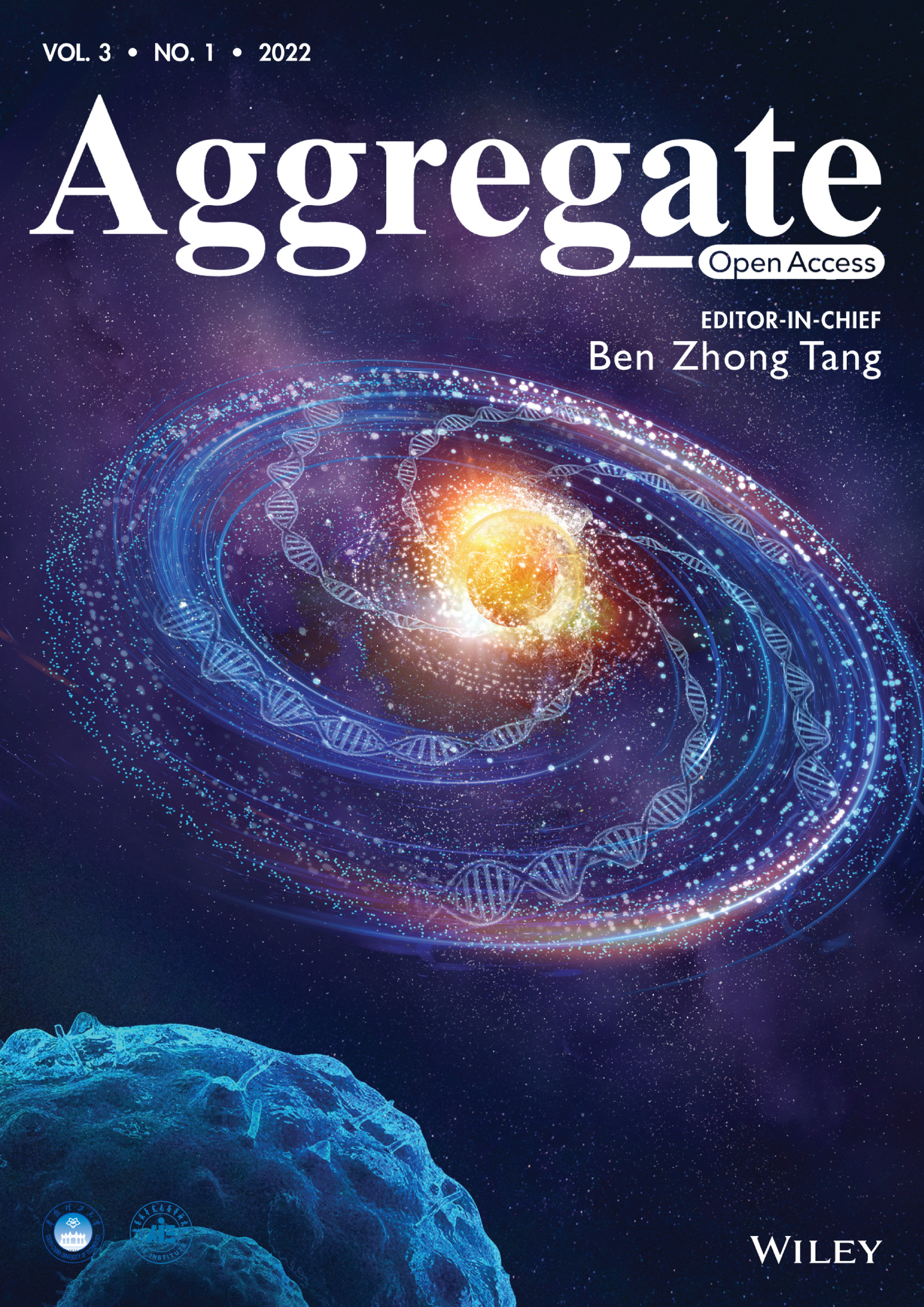
Spherical nucleic acids (SNAs) are oligonucleotide aggregates densely arranged on the surface of nanoparticle core. These organized nucleotide aggregates present significantly different biological properties compared to their linear counterparts, enabling advances in biosensing, bioimaging, and biomedicine. This review provides a comprehensive summary of SNAs and update our current understanding of SNAs for disease diagnosis and treatment. (Aggregate. e120)
INSIDE FRONT COVER
Inside Front Cover: Mesogens with aggregation-induced emission properties: Materials with a bright future
- First Published: 22 February 2022
INSIDE BACK COVER
Inside Back Cover: Frontier luminous strategy of functional silica nanohybrids in sensing and bioimaging: From ACQ to AIE
- First Published: 22 February 2022
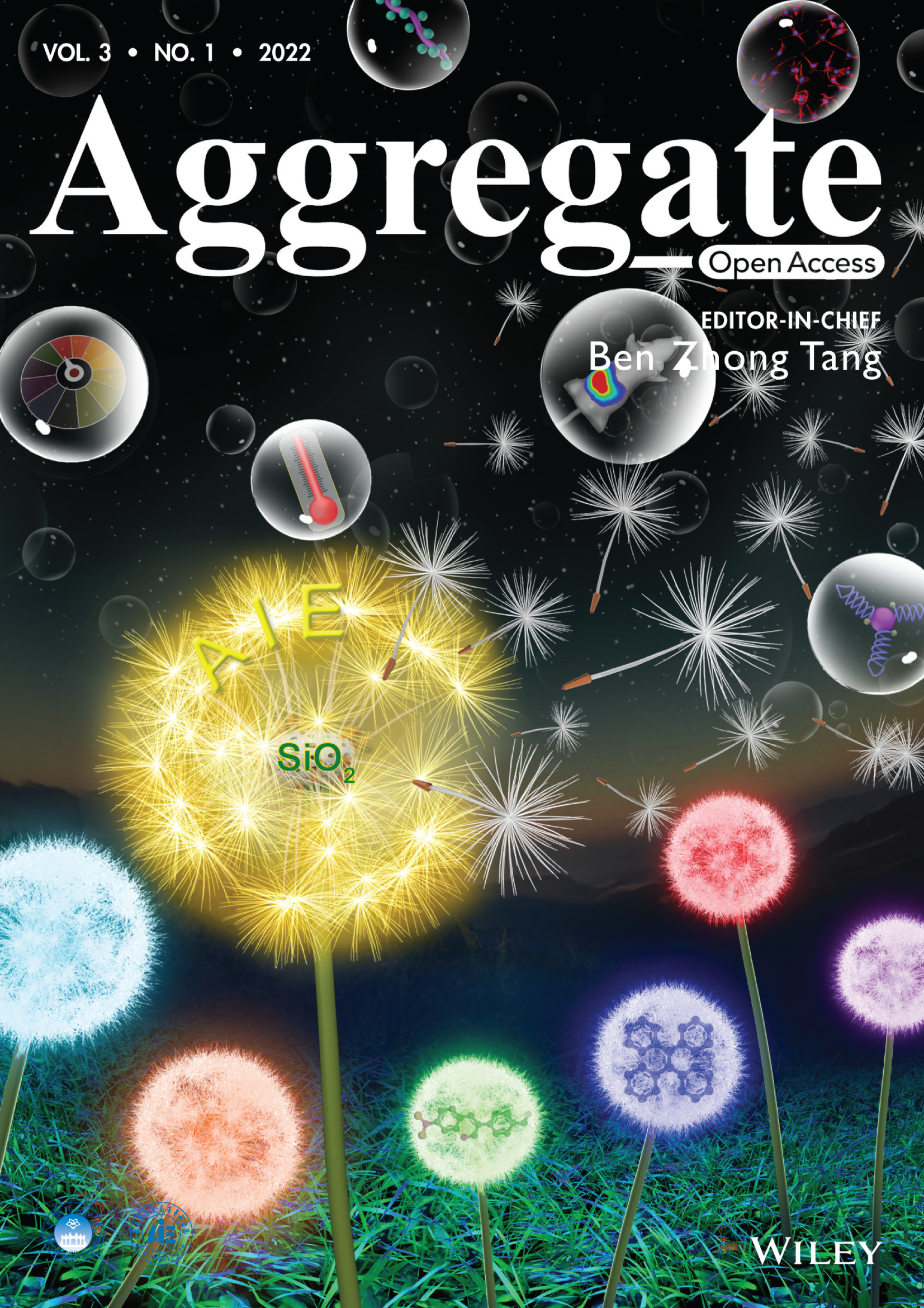
Fluorescent silica organic-inorganic nanohybrids (FSNs) could combine the designable luminescence performance of organic fluorescent dyes and outstanding advantages of silica nanomaterials. AIE luminogens (AIEgens) with tunable color have been incorporated in silica nanoparticles to develop ultra-bright FSNs. In this review, the fabrication methodologies of AIEgens-functionalized FSNs are introduced in detail. Furthermore, sensing and biomedical applications of FSNs are also discussed.
BACK COVER
Back Cover: Aggregation-induced demulsification triggered by the hydrophilic fabric for the separation of highly emulsified oil droplets from water
- First Published: 22 February 2022
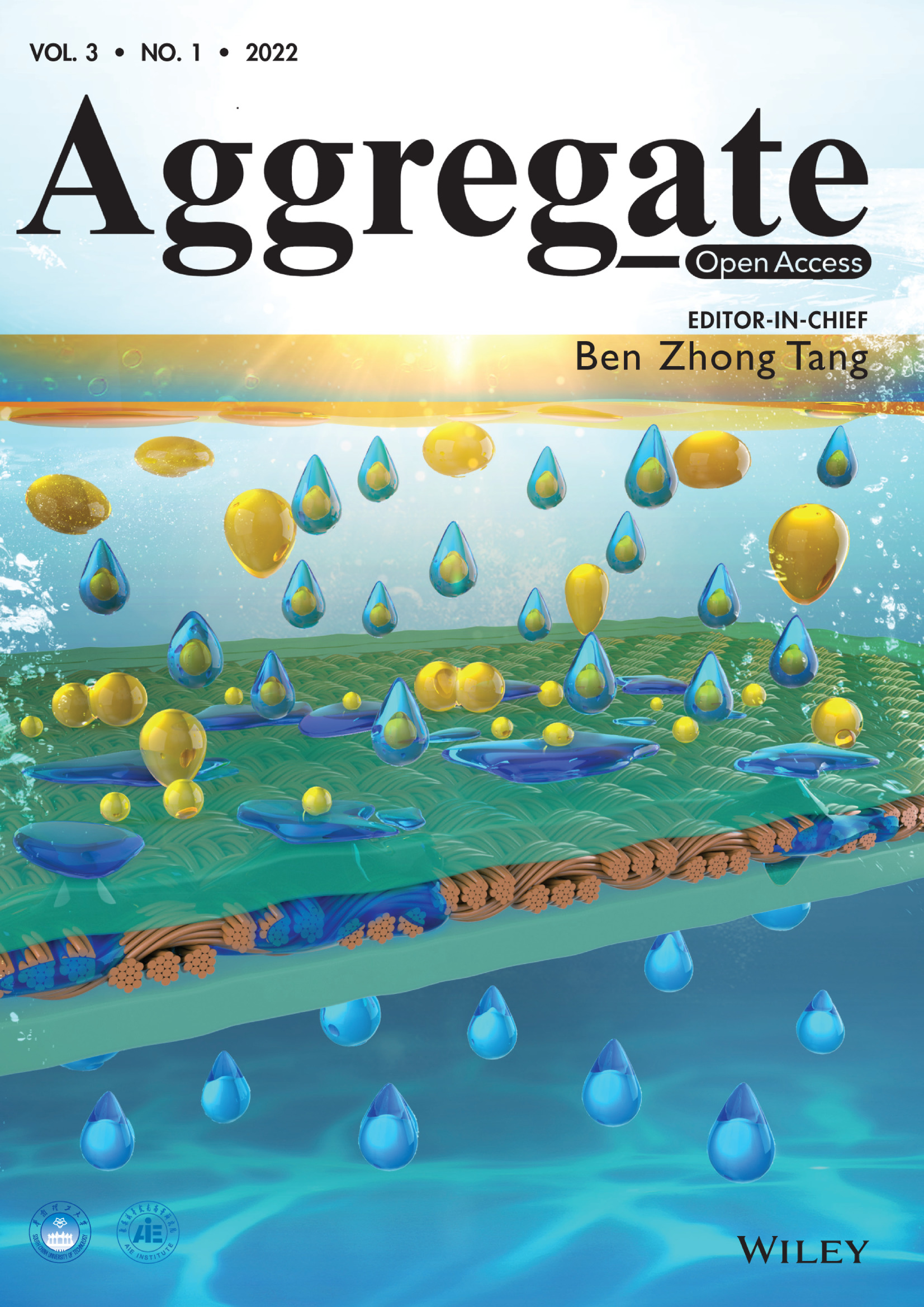
Separation of highly emulsified oil in water is urgently needed in industry. In article number e131, Peng-Cheng Ma and co-workers develop a functional fabric with excellent performance to separate highly emulsified oil in water, aggregation-induced demulsification process is proposed to reveal the mechanism behind such observation, and this is confirmed by studying the distribution of oil droplets in emulsion with a controlled separation degree.
ISSUE INFORMATION
REVIEWS
Spherical nucleic acids: Organized nucleotide aggregates as versatile nanomedicine
- First Published: 14 September 2021
Frontier luminous strategy of functional silica nanohybrids in sensing and bioimaging: From ACQ to AIE
- First Published: 10 September 2021

As a novel multifunctional material, fluorescent silica organic–inorganic nanohybrids (FSNs) have been widely applied in sensing and biomedical applications. AIE luminogens (AIEgens) with tunable color have been introduced in silica nanoparticles to develop ultra-bright FSNs. AIEgens-functionalized FSN materials will play a potentially great value in prospective practical applications with further design and optimization.
Mesogens with aggregation-induced emission properties: Materials with a bright future
- First Published: 09 September 2021
Amphiphilic AIEgen-polymer aggregates: Design, self-assembly and biomedical applications
- First Published: 21 October 2021
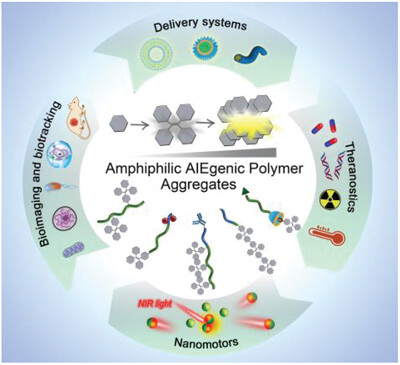
The recent advances in the design and synthesis of AIEgenic amphiphilic polymers are discussed. Their self-assembly leads to particles with very high fluorescence intensity. The versatility of polymer science allows the creation of a wide variety of particles which show much potential for biomedical applications.
Phase engineering of metal-organic frameworks
- First Published: 30 November 2021
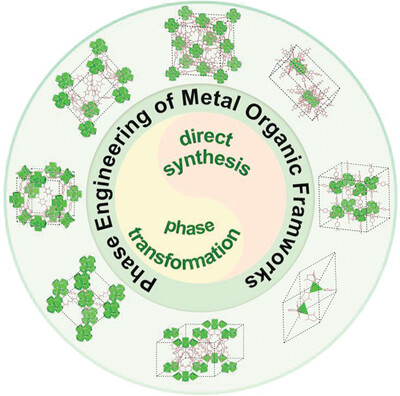
This review summarizes the recent progress in phase engineering of metal-organic frameworks (MOFs), including the direct synthesis of MOFs with novel phases and phase transformation of MOFs. The phase dependence of MOFs in luminescence, adsorption, and catalysis is briefly discussed. Perspectives on challenges and opportunities in this emerging direction are also presented.
Endowing inorganic nanomaterials with circularly polarized luminescence
- First Published: 08 December 2021

Circularly polarized luminescence (CPL) inorganic nanomaterials have attracted much attention due to their widespread application in various fields. Several kinds of inorganic nanostructures with CPL activity are reviewed in detail, including intrinsic chirality, ligand-induced chirality, and structural chirality caused by the supramolecular assembly. The related applications of CPL-active inorganic materials in enantioselective photopolymerization, optical information processing, and chemical sensing are summarized.
A historical review of aggregation-induced emission from 2001 to 2020: A bibliometric analysis
- First Published: 03 January 2022
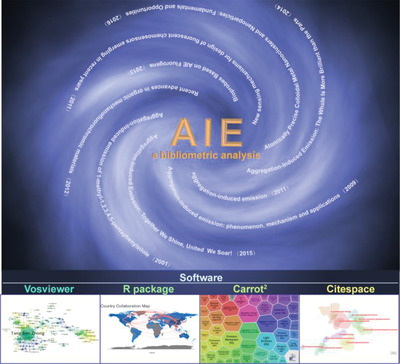
A bibliometric analysis is conducted to overview the development of AIE in the past two decades and provides a unique perspective for this field. Researchers with high citations, keyword co-occurrence networks, NIR-II imaging related foamtree, and frontier perspectives on AIE are visualized via different software in this study. A multi-interdisciplinary system has been formed with aggregate science as the core subject.
Influence of electrolyte structural evolution on battery applications: Cationic aggregation from dilute to high concentration
- First Published: 17 January 2022
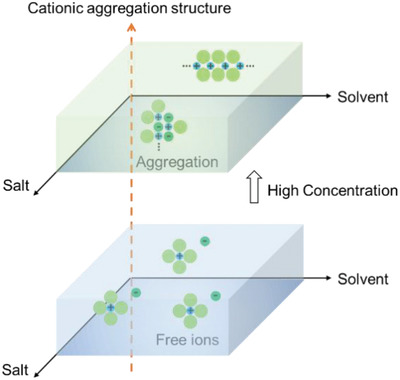
A new electrolyte design route is proposed by taking cationic aggregation structure into consideration based on the understanding of the correlation between electrolyte structure evolution and its effects on battery performance. This review will also summary the characterization techniques of electrolyte structures for better understanding.
RESEARCH ARTICLES
Aggregation-enhanced direct S0–Tn transitions and room-temperature phosphorescence in gold(I)-complex single crystals
- First Published: 06 October 2021

The photophysical behavior of an Au(I) complex that exhibits intense room-temperature phosphorescence (RTP) in crystals is described. Intermolecular Au–Au interactions are demonstrated to enhance S0–Tn direct excitation, and RTP. The insights into the mechanism of highly efficient RTP in Au(I)-complex crystals could advance the development of new luminogens for various applications.
Lanthanide-based bulky counterions against aggregation-caused quenching of dyes in fluorescent polymeric nanoparticles
- First Published: 21 October 2021
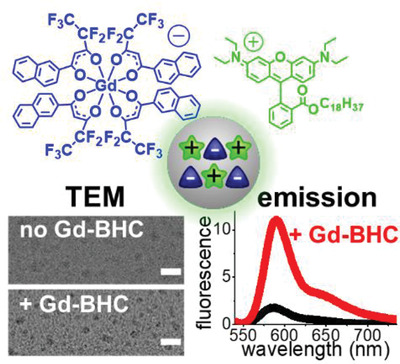
Dye-loaded polymeric nanoparticles are powerful bioimaging tools thanks to their strong brightness and biocompatibility. Here, we show that bulky hydrophobic counterions based on lanthanide complexes prevent aggregation-caused quenching of cationic rhodamine dye inside polymeric nanoparticles. The obtained nanoparticles display high brightness, delayed fluorescence, enhanced contrast in electron microscopy, and stability against dye leakage in live cells.
Aggregation-induced demulsification triggered by the hydrophilic fabric for the separation of highly emulsified oil droplets from water
- First Published: 14 October 2021
Self-assembly of colloidal nanoparticles into encapsulated hollow superstructures
- First Published: 08 December 2021
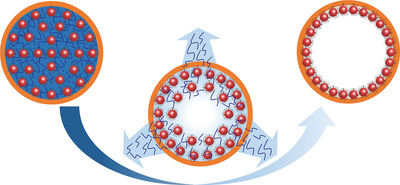
A general strategy is developed to fabricate submicron hollow superstructures by assembling nanoparticles against encapsulating polymer shells driven by the capillary action during solvent evaporation. Such a nanoscale space-confined assembly process can be well controlled by the choice of solvents and their evaporation rates.




